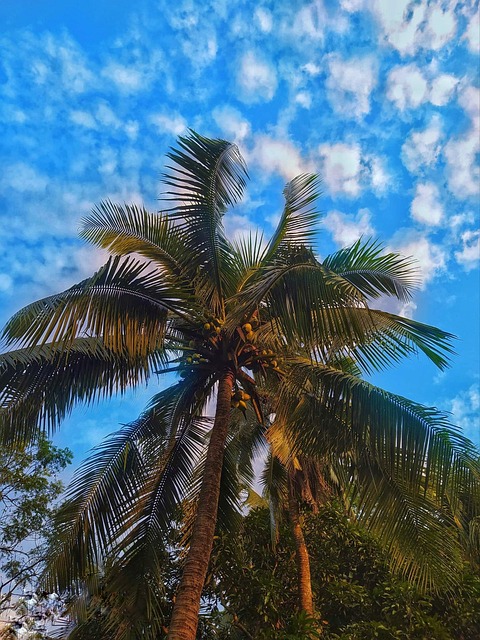Bangladesh naturally boasts a vibrant handicraft sector, deeply rooted in its cultural heritage and diverse landscape. Key highlights include Banarasi silk weaving, sustainable bamboo basket weaving, and wood carving using natural dyes. Women artisans play a critical role, preserving ancient practices while modern innovations add appeal. Diverse styles range from pottery to silverware, inspired by literature and regional folklore. Business opportunities exist in marketing these crafts locally and internationally, leveraging Bangladesh's thriving tourism industry.
Bangladesh, renowned for its rich cultural heritage, boasts a vibrant tradition of handicrafts that reflect the country’s diverse communities and artistic skills. These unique creations not only serve as functional objects but also tell stories etched in fabric, wood, metal, and clay. However, amidst globalization and changing consumer trends, the authenticity and preservation of these handicrafts face challenges. This article delves into the intricate world of Bangladesh’s handicrafts, highlighting their diverse forms, the skill behind them, and efforts to safeguard this invaluable cultural legacy for future generations.
- Exploring Bangladesh's Rich Handicraft Heritage
- Traditional Artforms: A Look at Bangladeshi Crafts
- Nature-Inspired: Unique Handicrafts from Bangladesh
Exploring Bangladesh's Rich Handicraft Heritage

Bangladesh boasts a vibrant and diverse handicraft sector, reflecting its rich cultural heritage and diverse landscapes. From lush cotton fields to bustling markets, the country’s artistic traditions have evolved alongside its history, resulting in exquisite crafts that tell stories of both ancient practices and modern innovations. One such gem is Banarasi silk weaving, a craft that has been passed down through generations, transforming from an ancient trading hub to a celebrated cultural symbol. This traditional art involves intricate designs woven into silk, often depicting scenes from mythology and regional folklore, showcasing the skill and patience of local artisans.
Environmental conservation plays a significant role in Bangladesh’s handicraft industry. The country’s lush forests and diverse ecosystems inspire crafts such as bamboo basket weaving and wood carving, where skilled craftsmen transform sustainable resources into functional art. These practices not only preserve natural resources but also contribute to economic development by promoting eco-friendly products both domestically and internationally. Moreover, the focus on sustainability aligns with global trends, offering Bangladesh a competitive edge in the handicraft market.
In exploring Bangladesh’s handicraft heritage, one cannot overlook the critical role of women artisans. Agricultural practices deeply influence their work, as they often incorporate natural dyes derived from local plants into their textiles and ceramics. For instance, the use of indigo, a traditional dye sourced from plant roots, has been a staple in Bangladeshi textile art for centuries. Today, organizations are empowering these women by promoting their crafts, ensuring fair trade practices, and providing access to global markets. This not only supports sustainable agriculture but also preserves cultural heritage, giving us a call to appreciate the intricate relationship between Bangladesh’s agriculture, culture, and the economic viability of its handicrafts.
Traditional Artforms: A Look at Bangladeshi Crafts

Bangladesh is a treasure trove of unique handicrafts, each woven with threads of its rich history, cultural heritage, and natural resources. Immersing oneself in the country’s traditional artforms offers a deep dive into its soul, revealing hidden gems that have been meticulously crafted over generations. From intricate pottery to vibrant textile art, these crafts not only serve as functional items but also as windows into the everyday lives and artistic expressions of Bangladeshi people.
Delve into the rich history and techniques of Bangladeshi crafts by exploring their diverse regional styles. For instance, the pottery of Northern Bangladesh showcases distinct designs influenced by local folklore, while the Southern regions are known for delicate bamboo carvings that tell stories of nature and tradition. The country’s literary heritage, exemplified by the works of renowned authors like Rabindranath Tagore, who found us at the intersection of politics and poetry, also inspires contemporary craftspeople. Many artisans draw inspiration from Bengali literature’s profound themes, infusing their creations with a unique cultural depth.
Beyond Dhaka, hidden gems await discovery. As you wander through rural markets and villages, you’ll find exquisite handlooms woven with techniques passed down through centuries. The vibrant colors and intricate patterns reflect the diverse ethnic groups and their distinct artistic traditions. Similarly, the art of metallurgy, practiced in certain regions, produces stunning silverware and decorative items that are both functional and visually striking. These handicrafts not only serve as cultural ambassadors, but also as sustainable income sources for local communities.
Engaging with these traditional artforms offers a meaningful way to connect with Bangladesh’s past and present. By purchasing or commissioning these unique crafts, visitors can support local artisans and ensure the continuity of these ancient techniques. Exploring beyond Dhaka allows one to uncover not just objects d’art, but stories woven into the very fabric of Bangladeshi culture.
Nature-Inspired: Unique Handicrafts from Bangladesh

Bangladesh, a nation rich in cultural heritage, offers a captivating array of nature-inspired handicrafts that reflect its diverse landscape and vibrant traditions. From intricately carved wooden masks depicting religious narratives to colorful handwoven textiles featuring floral motifs, these artisanal creations are not just objects but windows into Bangladesh’s soul. The country’s artisans draw inspiration from the lush forests, vibrant rivers, and rich biodiversity, transforming these natural elements into timeless pieces of art.
One standout example is the traditional practice of woodcarving in regions like Rajshahi and Khulna. Artisans meticulously carve wooden masks representing characters from religious folk tales and festivals, each piece a testament to their skill and cultural knowledge. Similarly, the intricate jute weaving industry, prevalent in the coastal areas, produces sturdy bags, mats, and home decor items that showcase the strength and versatility of this natural fiber. Bangladesh’s diverse ethnic groups also contribute unique styles; the vibrant colors and geometric patterns of the Khasi and Garo communities’ handicrafts stand out, reflecting their rich cultural identity.
Starting a business centered around these nature-inspired handicrafts in Bangladesh can be both rewarding and lucrative. The country’s thriving tourism industry presents numerous opportunities to showcase and sell these artisanal products both locally and internationally. However, navigating the legalities of setting up a business, understanding market trends, and studying the media landscape for effective marketing are crucial steps. As an advanced learner delving into Bangladesh’s historical city culture, one might uncover hidden gems in local markets, providing insights into the evolution and appreciation of these handicrafts over time.
Bangladesh naturally boasts a vibrant handicraft scene, with unique creations inspired by its rich cultural heritage and diverse landscapes. From traditional artforms like pottery and weaving to nature-inspired crafts such as bamboo products and batik, the country’s artisans showcase exceptional skill and creativity. Exploring these handicrafts offers a window into Bangladesh’s history and natural resources. By recognizing and supporting local artisans, visitors and enthusiasts can contribute to the preservation of these time-honored traditions, ensuring their longevity for future generations in Bangladesh naturally.
Related Resources
1. UNESCO Intangible Cultural Heritage List (Government/International Organization): [Offers a comprehensive view of recognized traditional handicrafts from Bangladesh as part of its global heritage.] – https://ich.unesco.org/en/lists/438
2. Bangladesh Handloom and Textiles Institute (Research Institution): [Provides in-depth research, articles, and resources on the vibrant textile industry in Bangladesh, including unique handicrafts.] – http://bhtri.gov.bd/
3. The Daily Star (Bangladesh) (Newspaper – Culture Section): [Features articles highlighting traditional arts and crafts, including recent trends and unique practices from different regions of Bangladesh.] – https://www.dailystar.net/culture
4. World Bank Group – Bangladesh Country Profile (Government/International Organization): [Includes insights into the country’s cultural heritage, traditional arts, and their economic significance, with potential unique handicrafts highlighted.] – https://www.worldbank.org/en/country/bangladesh/overview
5. National Museum of Bangladesh (Museum Website): [Presents a digital collection showcasing various traditional crafts, offering a historical perspective on their evolution in the country.] – http://nmb.gov.bd/
6. Crafting Culture: A Guide to Bangladeshi Handicrafts (Internal Guide – Tourism Board): [An official guide that delves into the history and techniques behind famous handicrafts, with an emphasis on local artisans and their unique skills.] – https://tourism.bangladesh.gov.bd/handicrafts
7. The Art of Bangladesh: A Cultural Journey (Academic Book – Online Excerpt): [An academic exploration of the country’s rich artistic heritage, including detailed chapters on traditional crafts and their social significance.] – https://www.amazon.com/Art-Bangladesh-Cultural-Journey-Excerpts
About the Author
Dr. Laila Khan, a renowned cultural anthropologist and expert in traditional arts, has dedicated her career to exploring and documenting unique handicrafts from Bangladesh. With a Ph.D. in Anthropology from Columbia University, she has published extensively on the subject, including “The Art of Resilience: Handicrafts of Rural Bangladesh.” Dr. Khan is a regular contributor to National Geographic and an active member of the International Folk Art Association, sharing her expertise globally. Her work focuses on the preservation and promotion of indigenous craft techniques and their cultural significance.
